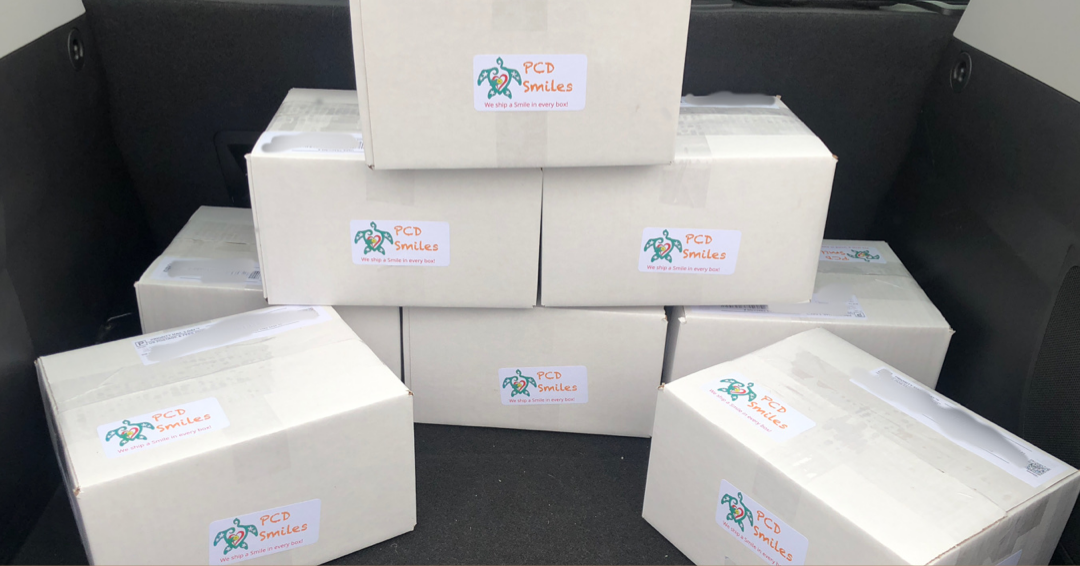The next device that we will cover in our airway clearance technique (ACT) series is oscillation & lung expansion (OLE). OLE is touted as the next big advancement in airway clearance. This hospital proven airway clearance therapy has been in use within US medical facilities since 2013. It’s usefulness during the recent 2020 pandemic caught the attention of medical professionals and regulatory authorities when it was granted EUA (emergency use authorization) by the U.S. Food and Drug Administration for the treatment of pandemic patients. OLE delivers three in one therapy; oscillation, expansion, and nebulization. Unlike intrapulmonary percussive ventilation (IPV), OLE can be utilized as a stand alone ACT. There are limited studies to date showing greater improvement in lung clearance index with the use of OLE, compared to the typical ACT methods used during exacerbations in adult cystic fibrosis (CF) patients.
The first OLE device, the MetaNeb®; was developed in 2013 by Baxter, formerly Hillrom, for use in the acute care setting. The MetaNeb® was quickly followed by Baxter’s home version the Volara® in 2020. And the BiWaze® Clear System by ABM Respiratory Care followed in late December 2022. OLE works under the premise of a three in one therapy that works together to expand the lungs and mobilize mucus. This is done by using continuous positive expiratory pressure (CPEP) to expand the airways immediately followed by continuous high frequency oscillation (CHFO) while providing continuous aerosol delivery throughout the entire therapy session. Expansion therapy has been shown to improve lung capacity over time, treat and prevent pulmonary atelectasis (air sac collapse(s) within the lung) by getting ventilation or rather airflow in and behind mucus and mucus plugs and expand the airway giving mucus more room to move during mobilization. Pneumatic pressure oscillation helps clear stuck mucus by shearing mucus and stuck mucus away from the airway walls, it prevents mucus pooling, it aids in mucus clearance, as well as aids and or assists the cilia in the airways to do their job. Aerosol delivery allows airway medications to get deeper into the lungs, especially in the harder to reach lower lung lobes, and helps to keep the airway mucus hydrated to help thin the mucus in order to help mobilize the mucus from the smaller airways to the larger airways where it can be coughed out.
OLE devices are often mistaken as IPV devices, but OLE is not IPV. This is an important distinction, and one that is often confused and conflated by clinicians, physicians, respiratory therapy providers, researchers, and patients alike. OLE and IPV are not the same therapy although they are both used in respiratory care. They both use aerosol delivery and mobilize mucus during therapy. But, OLE uses a combination of continuous positive expiratory pressure (CPEP) and continuous high frequency oscillation (CHFO) with or with out oxygen therapy to clear secretions, to treat and or to prevent atelectasis. Whereas, IPV uses short burst of high pressure air without oxygen therapy to clear secretions.
OLE is still considered, to date, by the insurance industry as investigative and unproven for most insurance policies. However through the efforts of Baxter, their OLE devices were developed in accordance with Medicare guidelines and regulatory approval as well. This will make OLE devices more accessible to patients in the near future. Baxter is currently working to get a Medicare code for their OLE devices which will open Medicare approval for Medicare recipients. This process for Medicare coding will likely take the five year process that Baxter, formerly Hillrom, went through with their vest airway clearance system. Once OLE has a Medicare code, patient access utilizing insurance coverage within the United States should become much easier and a less arduous process.
As discussed earlier there are currently, to date, three models of OLE therapy devices available to the respiratory patient. The first and oldest is the MetaNeb® by Baxter which is a medical facility only device due to being driven by compressed oxygen that is only available in patient acute care settings. The MetaNeb® delivers OLE therapy with aerosolized medications, such as bronchodilators and saline solutions, and can provide supplemental oxygen during therapy sessions. The MetaNeb® alternates between CPEP and CHFO in two and a half minute intervals while providing aerosol through a mask, mouthpiece, tracheotomy, and or in-line ventilation. Although therapy session times may vary depending on the patient’s needs and physician order prescription. There must be some form of bronchodilator medication or saline running through the MetaNeb® during the entire therapy session to prevent the airways and the airway mucus from drying out, which the dehydrated mucus and dry airways will inhibit mobilization of the mucus within the airways. The MetaNeb® has a fixed max pressure setting of 30cmH2O. The wide diverse patient population that the MetaNeb® services and the resulting reduced number of needed days within a medical facility setting when the MetaNeb® was utilized, patients and clinicians alike started to see the potential of a home version of the MetaNeb®, which lead to the development of the Volara® by Baxter.
The Volara® was released for purchase for patients for home use in the summer of 2020. It is the newest OLE version by Baxter, formerly Hillrom. During testing the Volara® slowly started replacing the MetaNeb® within acute care facilities with so much success that the Volara® is still used to date, and in some cases has totally replaced the MetaNeb® within entire facility networks. The Volara® has the added appeal of not needing compressed gases to power it, and it’s pressure setting is not fixed and exceeds the maximum pressure setting 30cmH20 limitations of the MetaNeb®. This non fixed pressure setting opens up a wide range of possibilities in continuing OLE therapy at home, especially for the cystic fibrosis and primary ciliary dyskinesia population who experience thicker mucus than most other pulmonary patients with mucus issues. This wide range of pressure settings available through the Volara® enables more tailored patient treatment settings. Patients using the Volara® can have tailored treatment plans, including sick plans that can be saved by the Volara® trainer to the device, and then easily switched to by the patient themselves depending on their exact treatment plans. With the suggested sick plan you can store multiple plans that are then locked into the machine and can’t be changed, except by the prescriber or Baxter’s Volara® trainers. The patient should understand and know when and how to use their settings including when to switch to their sick plans and when to switch back to other settings. Trainers are available to patients anytime, anywhere, and free of charge courtesy of Baxter. The Volara® has a built in safety stop to keep patients safe while using the machine. If at anytime the Volara® system detects a pressure feedback of more than 5 points above the maximum pressure setting of the exact session for 3 seconds for the therapy session being used the machine shuts off to protect the user. The Volara® also has programmable cough pauses that can be added into your treatment sessions, or not depending on patient preferences. These cough pauses will need programmed by your Volara® trainer at time of set up of your Volara®. The Volara® comes with a consumable patient circuit that counts down from ninety treatments. Each patient circuit is good for thirty days or ninety treatments, whichever comes first, and then needs replacement with a new circuit. As you take treatments the circuit counts down, marking each therapy session. For a session to count as a session at least seventy percent of the treatment must be completed for the machine and circuit to count the session as one therapy session. So for a ten minute treatment session the patient must complete at least seven minutes of the session to count. This is important to keep in mind if your device loses power, performs a safety shutdown, or the therapy session is interrupted for any reason including a pause. You may also pause the system at any point in the session for up to five minutes for whatever reason like a cough you can’t stifle, perhaps a bathroom emergency, or so on. If you don’t return within the five minutes the therapy session ends. So don’t forget manual pauses only last for five minutes. Once a circuit counts down to zero the machine will not start another therapy session without replacement with a new patient circuit. The Volara® is FDA approved for five years of age and above in a home setting, and two year and above in a acute care setting; although the Volara® may be used off label for other ages and instances as deemed by the patient’s care team. The Volara® can be used with a mask, mouthpiece, tracheotomy, and in-line ventilation. It is FDA approved to deliver aerosolized bronchodilators, hypertonic saline, normal saline, mucomist, and is currently being evaluated for pulmozyme delivery. Inhaled antibiotics are never to be used in the Volara®. The Volara® can also be used in line with supplemental oxygen delivery. The Volara® is contraindicated in patients with an untreated pneumothorax. Otherwise the Volara® plan is physician directed based on over all heath picture of the patient it is prescribed for based on the physicians risk versus benefits analysis with the physician and the manufacturer. The Volara® provides continuous positive pressure through one circuit during both the inspiratory and expiratory phase to help mobilize mucus and provide ventilation to get behind plugs and stuck mucus to alleviate and prevent airway collapses. Much like it’s predecessor does the Volara® does this by alternating CPEP to expand the airway walls directly followed by CHFO to oscillate the airways all the while providing aerosol delivery to the airways to help them stay open, hydrated, and hydrate the airway secretions like mucus. This effect of airway expansion and oscillation can last for several minutes to several hours, where the patient will or can experience involuntary productive coughs and voluntary productive coughs. Normal Volara® therapy session last ten minutes for the general respiratory population, twenty minutes for the cystic fibrosis and primary ciliary dyskinesia patient population due to their thick mucus viscosity seen in those populations. Baxter offers free training, questions and answers, call their customer service line and ask for a Volara® specialist representative. The Volara® is portable and light weight at just eleven pounds and comes with a handy backpack for easy transporting. It also has an optional and removable battery, check with your insurance company for battery coverage. Though on average the battery is not covered under insurance but is a get investment for on the go patients that offers flexibility in airway clearance on the go. The battery must be removed from the machine in an airplane and carried in a separate bag like a purse or additional carry-on bag. The Volara® should never be checked and always carried on the plane. See your clinic for a Volara® letter for the TSA or airlines in the event they need further information on the Volara® you are carrying onto the plane. The Volara® should not be used during flight as far as we know at the time of this publication, as is suggested with any airway clearance device or technique. For more in-depth information on the Volara® ask your clinic’s licensed respiratory therapist, your clinic’s contracted licensed respiratory therapy provider, or your Baxter’s Volara® representative.
The BiWaze® Clear System by ABM Respiratory Care was introduced as an OLE in late December of 2022 and is somewhat similar to the Volara® home OLE. The BiWaze® Clear System offers therapy only though the use of a face mask, a mouthpiece, and a tracheotomy. Unlike the Volara® the BiWaze® Clear System does not offer continuous positive expiratory pressure (CPEP), instead it only offers positive expiratory pressure (PEP) during the lung expansion portion of the therapy session and not during CHFO at all. The BiWaze® Clear System does not offer multiple locked in and saved therapy settings. Instead the BiWaze® Clear System offers a single set pressure setting preprogrammed per the patient prescription. Though the patient is able to increase the pressure by 5cmH2O or lower the pressure by 5cmH2O. The BiWaze® Clear System operates on an electronically controlled dual blower system that filters out expiratory particles which is touted not to allow droplet contamination of the air around the patient during therapy session, however this doesn’t necessarily negate droplet contamination from patient coughing or mucociliary clearance. The BiWaze® Clear System offers aerosol through mesh nebulizer system instead of the air jet system used by Baxter, as a way to cut therapy time to just ten minutes with simultaneous delivery of aerosol while PEP and CHFO are being preformed. However it’s not clear how this is done as The BiWaze® Clear System is not FAD approved for aerosol delivery of anything but normal saline. This means the patient would need to nebuluze their bronchodilator prior to using The BiWaze® Clear System and then use saline in The BiWaze® Clear System to keep the airways and mucus from drying out during therapy, which will prevent mobilization of mucus. The BiWaze® Clear System comes with an integrated battery, a handy carrying case, and is just nine pounds. The issues surrounding air travel with an integrated battery on the BiWaze® Clear System has yet to be addressed. However ion device batteries must be removed prior to air travel according to regulations regarding air travel with devices. Attempts to clarify this situation with The BiWaze® Clear System went unanswered by ABM Respiratory Care. We will provide update on this issue as soon as ABM Respiratory Care provides us more detailed information. For more in-depth information on the The BiWaze® Clear System ask your clinic’s licensed respiratory therapist, your clinic’s contracted licensed respiratory therapy provider, or ABM Respiratory Care’s The BiWaze® Clear System representative.
The use of OLE is mostly aimed at increasing ventilation in a patient’s airway to move mucus and improve gas exchange within the airways. The effectiveness of OLE in primary ciliary dyskinesia (PCD) remains up for debate because of the lack of research due to the newness of the technology, but with Medicare approval on the horizon the future research of OLE and PCD is promising within the United States. Especially promising given the antidotal information coming from PCD clinicians and PCD patients alike. This maybe owing to the fact that OLE treats and prevents atelectasis, a common clinical consequence of PCD. Less atelectasis in a PCD patient’s airways, is less areas where mucus can breed in pooled, trapped, and plugged mucus. Also the increased ventilation provided by the lung expansion process has been shown to improve lung capacity over time. OLE relies less on oscillation targeting the airway cilia, which the airway cilia in PCD is broken at the cellular level so oscillation may not be beneficial to the PCD patient. Oscillation augmentation of PCD cilia is another area that requires more in-depth research. It is also important to note that OLE therapy is available outside the United States, with several Baxter Volara® models having been delivered to patient homes within the United Kingdom, Australia, and New Zealand to date.
While airway clearance techniques are widely used throughout the world; the physiological mechanisms and consequences of airway clearance techniques are mostly misunderstood in the context of the diseases that the airway clearance techniques are prescribed for. There are many considerations for OLE therapy. Having medical professionals that are adequately trained on the specifics of OLE therapy is a must for patient safety, including but not limited to the prescribing physician. Airway clearance techniques are intended to remove mucus from the peripheral airways to the central airways where the mucus can be expectorated or rather coughed out by the patient in a safe manner. The process of moving the mucus along the airways to be coughed out can last for several minutes after the treatment or rather ACT session has ended. Patients can expect to have increased voluntary and involuntary airway clearance, sometimes for several hours after the ACT session has ended. ACTs provide temporary increase in mucociliary clearance, which is why multiple ACT sessions are needed daily to be effective at helping maintain pulmonary hygiene or rather effective airway clearance. We hope that you join us next week for part thirteen of our series on airway clearance techniques.
Be sure to join us next week for another Topic Thursday.
Join our Facebook group Turtle Talk Café today.
We have several ways that you can donate to PCD Smiles;
- Visit Smile E. Turtle's Amazon Wishlist
- For more information on how you can donate, please visit our "Donation" page to check out our "Do & Don't policies.
- Or sponsor a PCD Smiles cheer package today!
- To shop for your “Official” turtle care ribbon gear today, visit PCD Style or Smile E. Cove
Thank you for your consideration!
***Please speak to your respiratory therapist or your PCD medical team before commencing any new treatment. DO NOT start using a device, or technique, on this website if you have not discussed this with your PCD team first.***













